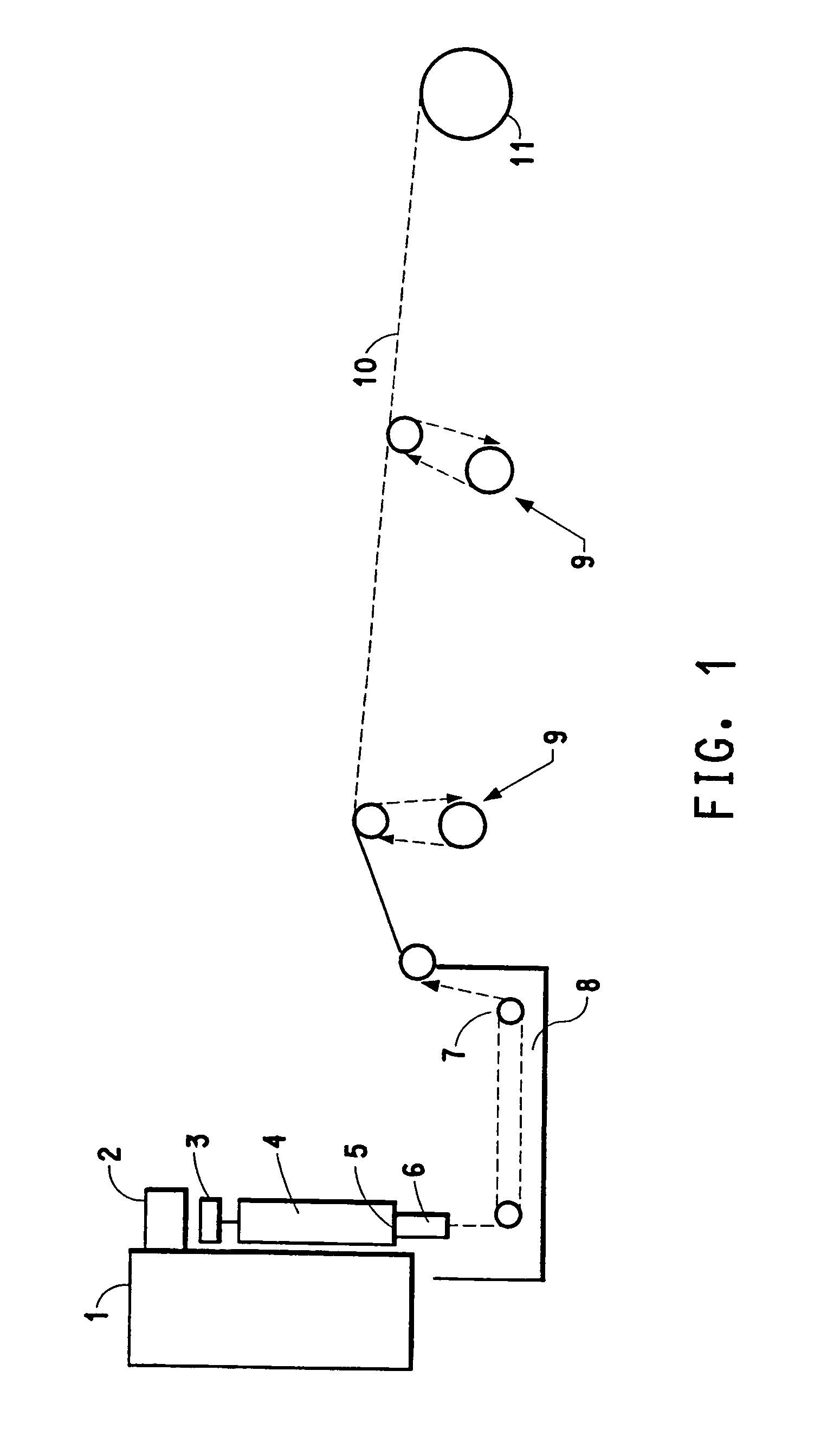Polysaccharide fibers
a polysaccharide and fiber technology, applied in the field of new fibers, can solve the problems of reducing the usefulness of starch or amylose, reducing the usefulness of fiber applications, and reducing the efficiency of fiber applications
- Summary
- Abstract
- Description
- Claims
- Application Information
AI Technical Summary
Problems solved by technology
Method used
Image
Examples
example 1
[0047]2.86 g of wet polymer P2 was boiled in 150 ml deionized water for 1 h. After cooling, the product was collected by filtration and washed 3× with glacial acetic acid. The polymer, still wet with acetic acid, was suspended in a prechilled (−25° C.) acetylating mixture consisting of acetic anhydride (20 ml), glacial acetic acid (14 ml) and methylene chloride (20 ml). Mechanical stirring was started and 70% aqueous perchloric acid (0.2 ml) was added to initiate esterification. The reaction mixture was allowed to warm to 0° C. and held there for 3 h. The reaction mixture was subsequently allowed to warm to room temperature and held for 1 h, then frozen in dry ice overnight, and then warmed to room temperature again.
[0048]The viscous, homogeneous solution of thus acetylated P2 polymer was precipitated in methanol with rapid stirring and collected by filtration. The filtrate was thoroughly washed twice with methanol, then five times with deionized water, and then four times with meth...
example 2
[0051]The as-spun fiber of Example 1 was deacetylated to yield regenerated poly (α(1→3)-D-glucose) fibers with good mechanical properties. A small skein of the fiber of Example 1 was immersed in a large excess of 0.05M methanolic sodium methoxide and allowed to stand at room temperature for 24–72 h under nitrogen. The skein was removed, washed with methanol, blotted and air dried. Filament tenacity / elongation / modulus values were 2.7 / 12.5 / 51.3 grams per denier / percent / grams per denier, respectively.
example 3
[0052]1.0 g of dried powder of P1 polymer was suspended in deionized water and boiled under nitrogen for 2 h. After cooling, the powder was collected by filtration and pressed to yield a wet filter cake. This was subsequently immersed in 100 ml of glacial acetic acid, stirred for 5 minutes at room temperature and collected by filtration. The acetic acid rinse was repeated and the powder was collected and pressed to remove excess acetic acid.
[0053]The filter cake was then added to a chilled (−25° C.) acetylation medium consisting of acetic anhydride (10 ml, 99.7%), glacial acetic acid (7 ml) and dichloromethane (10 ml). Perchloric acid (0.1 ml, 70%) was added and the reaction maintained with stirring at a temperature in the range of −30° C. to −2° C. for 6 h and then allowed to warm to 24° C. and held for 30 min. The resulting viscous mixture was precipitated into rapidly stirred methanol and then filtered. The filter cake was then washed once with methanol, followed by two washings ...
PUM
| Property | Measurement | Unit |
|---|---|---|
| Fraction | aaaaa | aaaaa |
| Fraction | aaaaa | aaaaa |
| Fraction | aaaaa | aaaaa |
Abstract
Description
Claims
Application Information
 Login to View More
Login to View More - R&D
- Intellectual Property
- Life Sciences
- Materials
- Tech Scout
- Unparalleled Data Quality
- Higher Quality Content
- 60% Fewer Hallucinations
Browse by: Latest US Patents, China's latest patents, Technical Efficacy Thesaurus, Application Domain, Technology Topic, Popular Technical Reports.
© 2025 PatSnap. All rights reserved.Legal|Privacy policy|Modern Slavery Act Transparency Statement|Sitemap|About US| Contact US: help@patsnap.com



